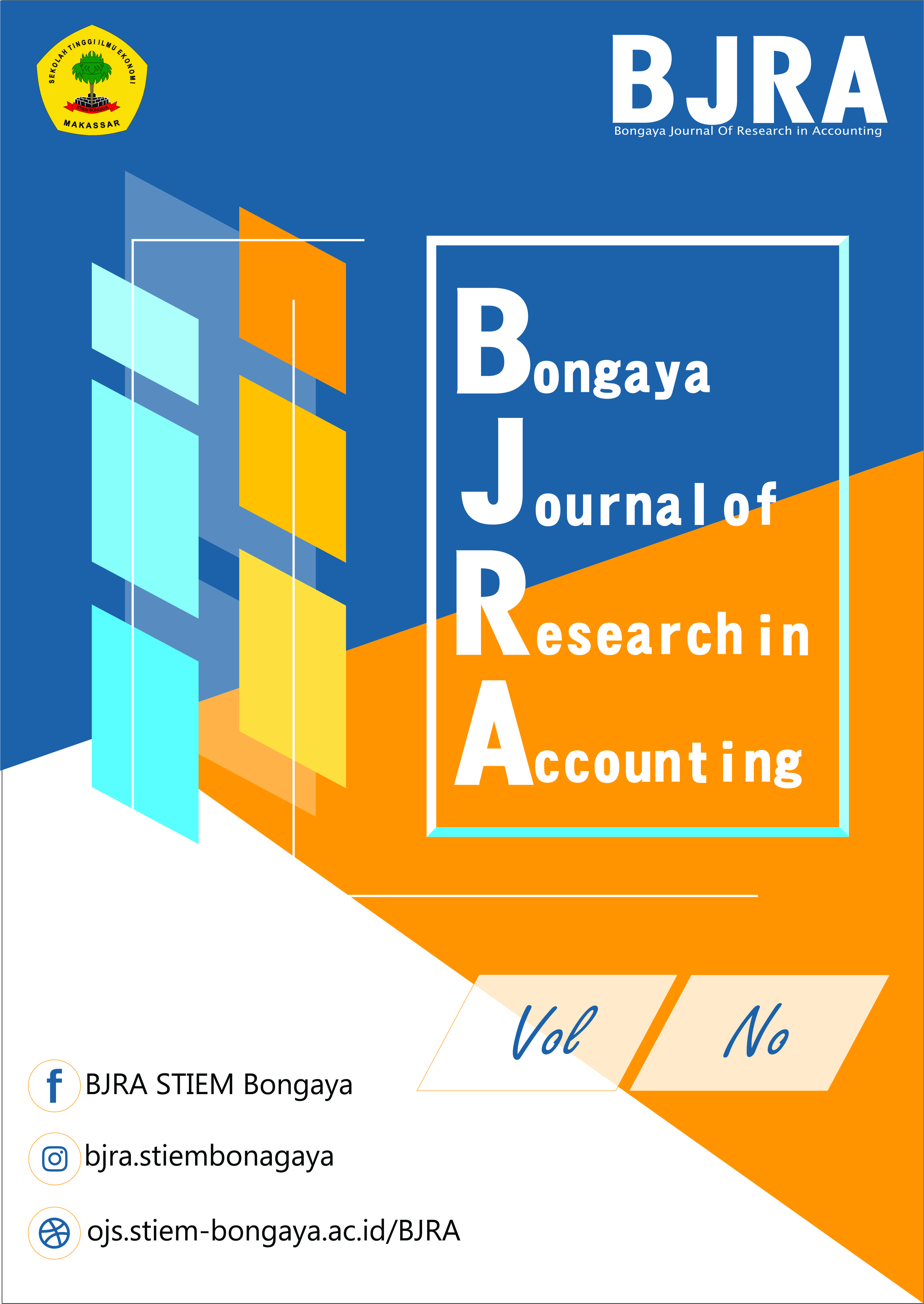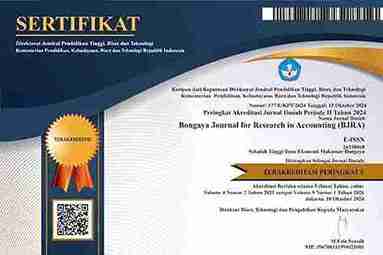Analisis Perencanaan Dan Pengelolaan Persediaan Dengan Metode EOQ Untuk Meningkatkan Efisiensi Biaya Persediaan Pada PT WIJAYA RISKISMAS TUNGGAL
DOI:
https://doi.org/10.37888/bjra.v6i1.375Keywords:
Perencanaan dan Pengelolaan Persediaan, Economic Order Quantity (EOQ)Abstract
Good inventory planning and management usually lies in understanding the company's stock of inventory, whether located in warehouses or stores, and how the inventory processes go into and out of the company.
The analytical technique used in this research is descriptive analysis technique. Primary data were collected and obtained through observational interviews, documentation studies and literature studies, while secondary data were obtained from literature related to the research topic. The financial statements used as the object of research.
The results showed that PT Wijaya Riskismas Tunggal carried out the inventory planning process without considering the amount of inventory in the company. The total beginning inventory in the company throughout 2020 was 68,265 with an average of 5,689 while the total use made by the company was only 41,272 with an average of 3,439 which caused the company's total ending inventory to be 26,993 with an average of 2,249, PT. Wijaya Riskismas Tunggal performs the Inventory Management process regardless of the number of requests required by each customer. The number of inventory purchases made by the company is 42,700 with an average of 3,558, while the number of uses required by consumers is only 41,272 with an average of 3,439. Compare the calculation made by PT Wijaya Riskismas Tunggal with the traditional calculation of 41,272 with the total cost of inventory. Rp. 6,130,000 while the calculation using the Economic Order Quantity (EOQ) method is 41,727 with a total inventory cost of Rp 5,673,814.
References
Aisyah, Siti, Febrianty, Hery Dia Anata Batubara, Indra Siswanti, Jony, Supitriyani dan Astuti. 2020. Manajemen Keuangan. Yogyakarta: Yayasan Kita Menulis.
Amin, Al, Muhammad. 2018. Filsafat Teori Akuntansi. Magelang: Unimma Press.
Andayani, Kurnia dan Yudi Sidharta. 2020. Praktikum Akuntansi. Yogyakarta: PT Nusa Daya.
Anwar, Muhammad. 2019. Dasar-Dasar Manajemen Keuangan Perusahaan. Jakarta: Kencana.
Ardhianto, Nur, Wildana. 2019. Buku Sakti Pengantar Akuntansi. Jakarta: Anak Hebat Indonesia.
Arianto. 2021. Komunikasi Pemasaran Konsep dan Aplikasi Di Era Digital. Jakarta: Airlangga University Press.
Arif, Muhammad. 2018. Supply Chain Management. Yogyakarta: CV Budi Utama.
Arifin, Zainul, Agus. 2018. Manajemen Keuangan. Yogyakarta: Zahir Publishing.
Arinawati, Ely dan Suryadi Badrus. 2019. Penataan Produk Kompetisi dan Keahlian Daring dan Pemasaran. Jakarta: Anggota IKAPI.
Arniwita, Endah Tri Kurniasih, Octojaya Abriyoso dan Bayu Wijayantini. 2021. Manajemen Keuangan Teori dan Aplikasi. Solok: CV Insan Cendekia Mandiri.
Blocher, Chen, Cokins, dan Lin. 2016. Manajemen Biaya Penekanan Strategis. Jakarta : PT Gramedia.
Darya, Putu Gusti. 2019. Akuntansi Manajemen. Ponorogo: Anggota IKAPI.
Eunike, Agustina, Rahmi Yuniarti dan Rio Prasetyo Lukodana. 2021. Perencanaan Produksi dan Pengendalian Persediaan. Malang: UB Press.
Farid. 2017. Kewirausahaan Syariah. Jakarta: Kencana.
Fattah, Mochammad dan Purwanti Pudji. 2017. Manajemen Industri Perikanan. Malang: UB Press.










